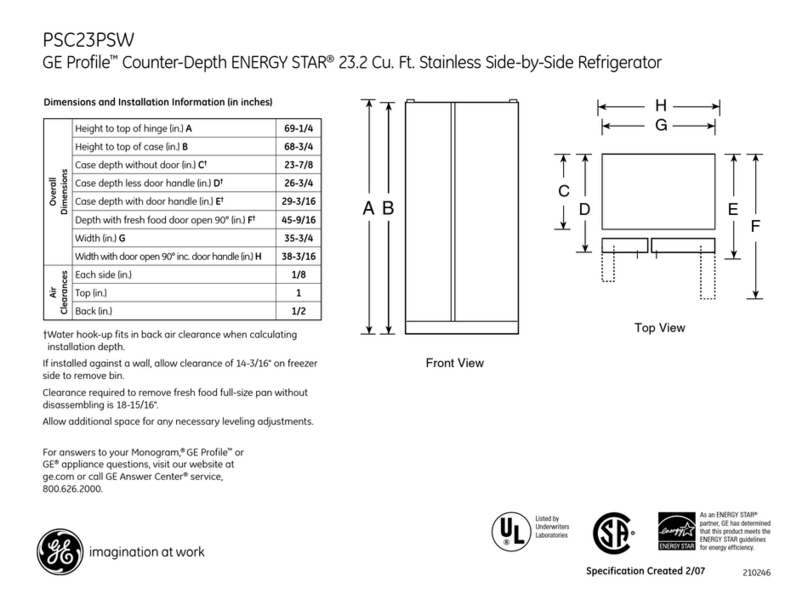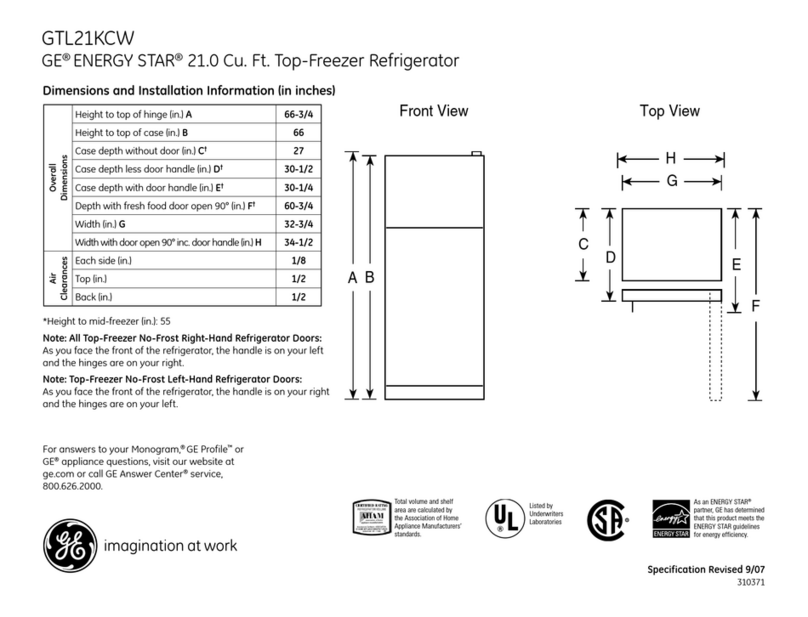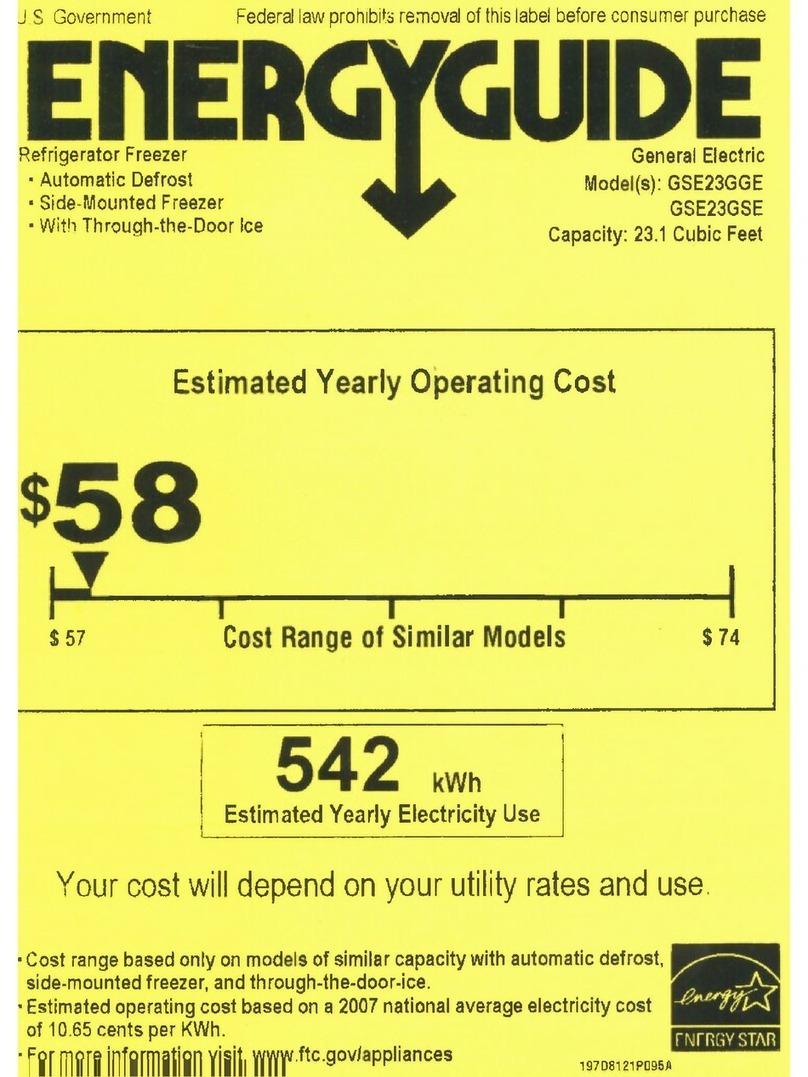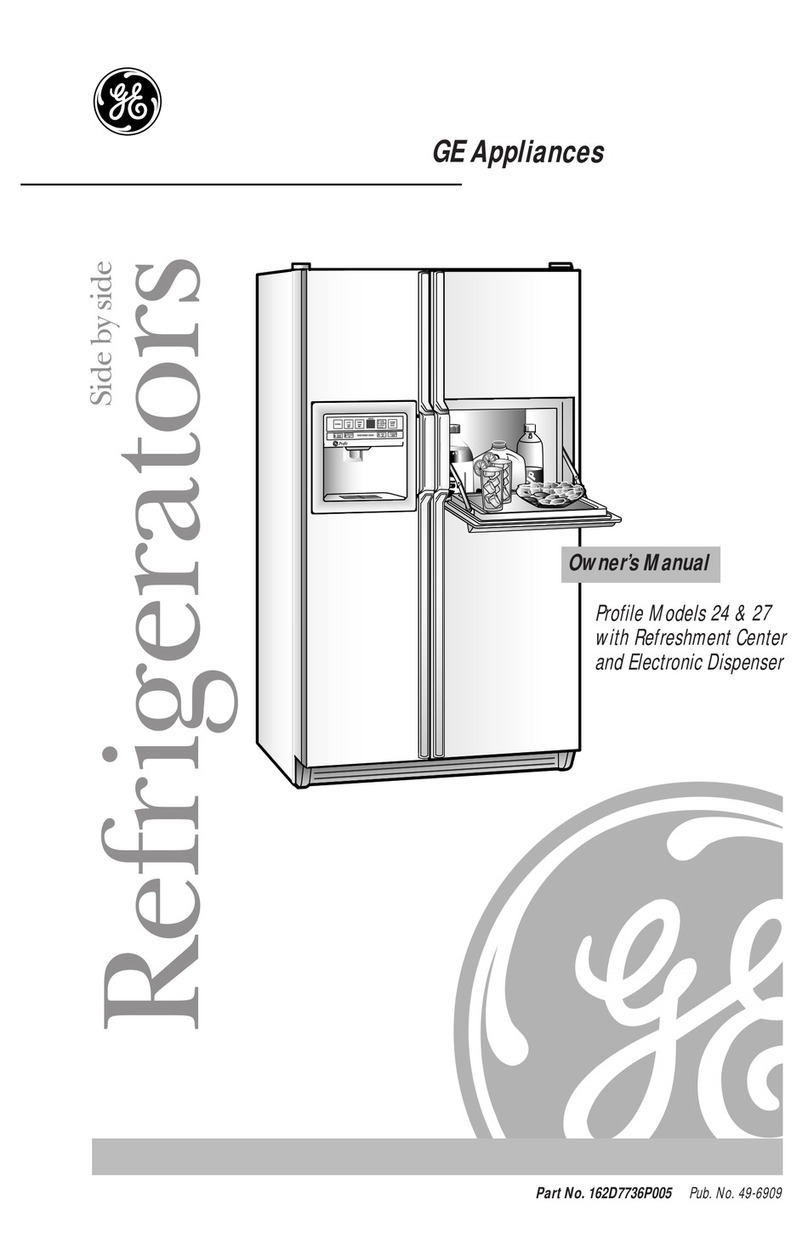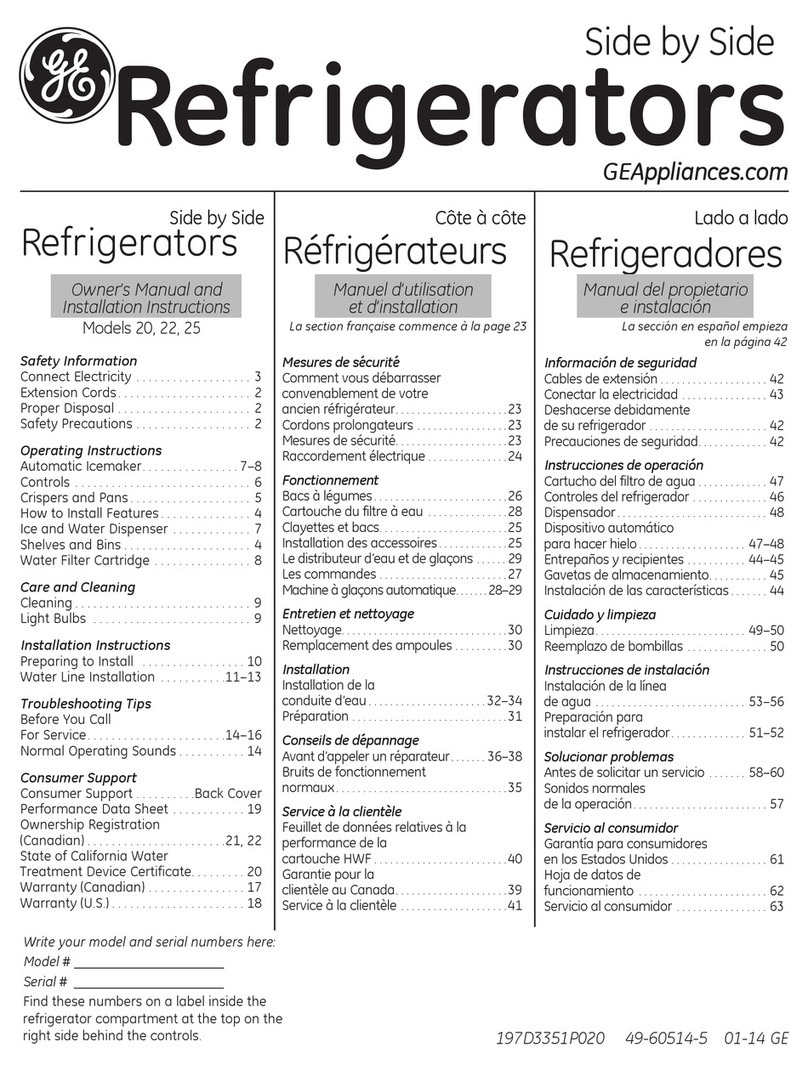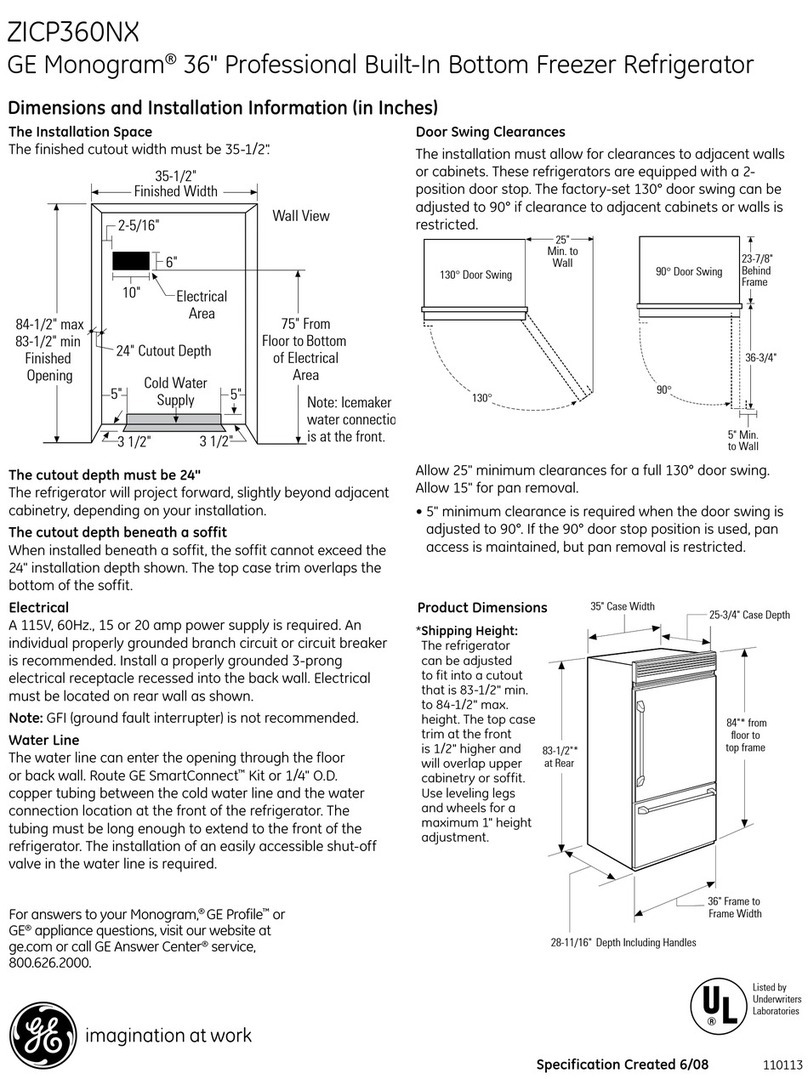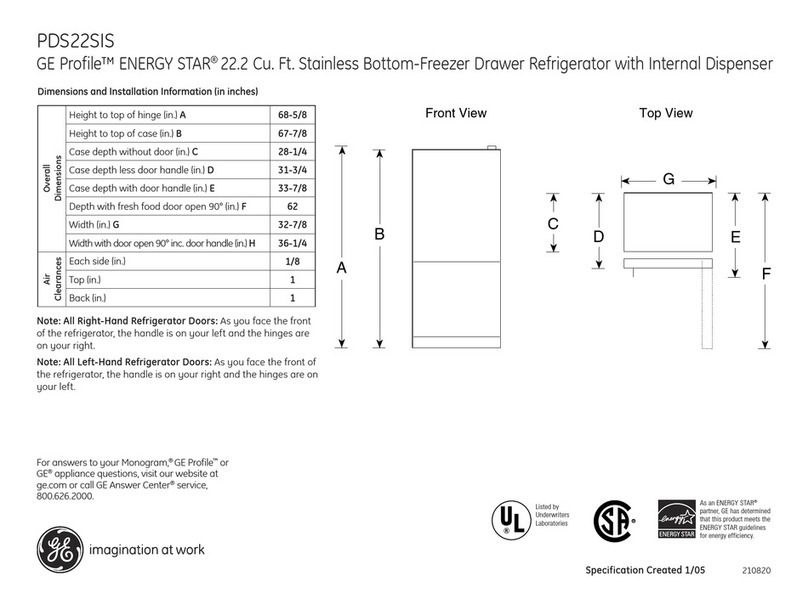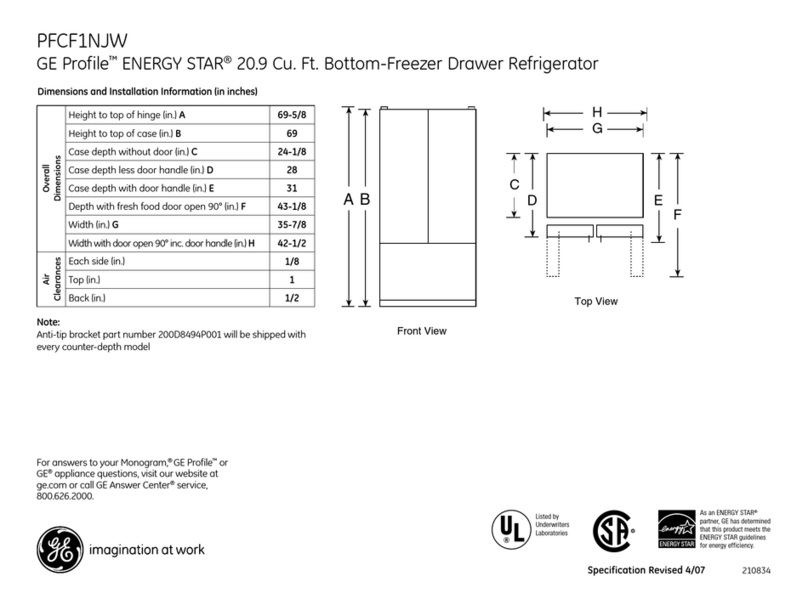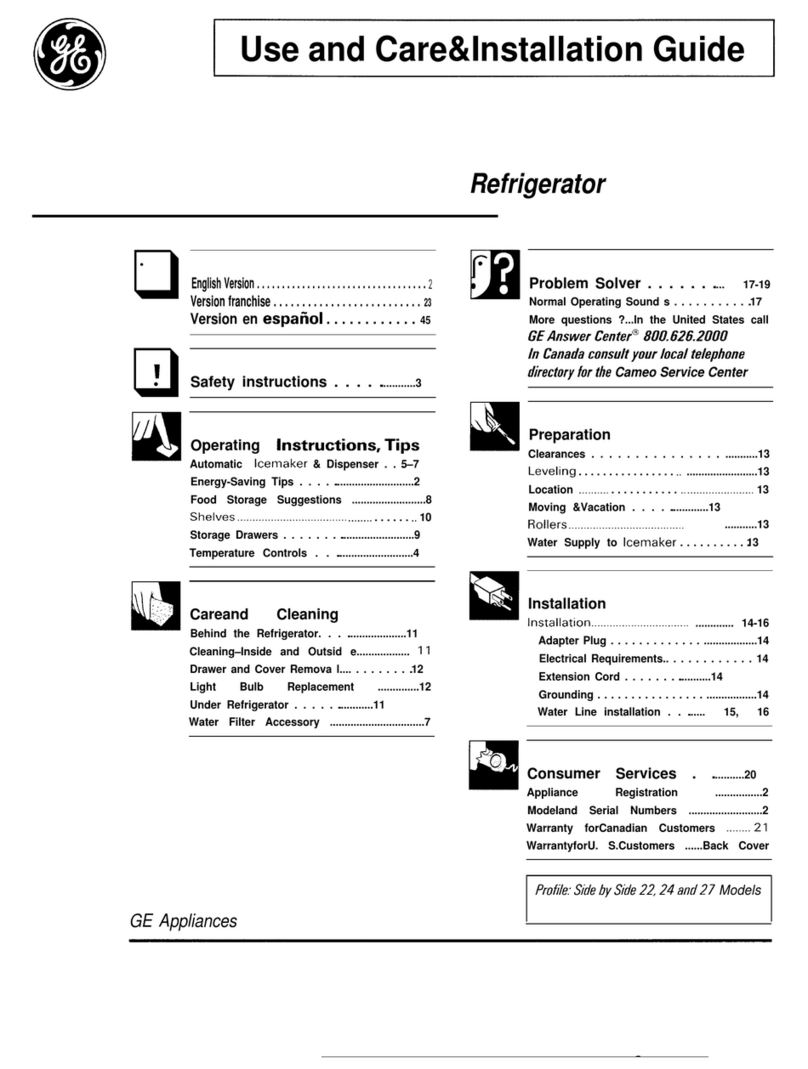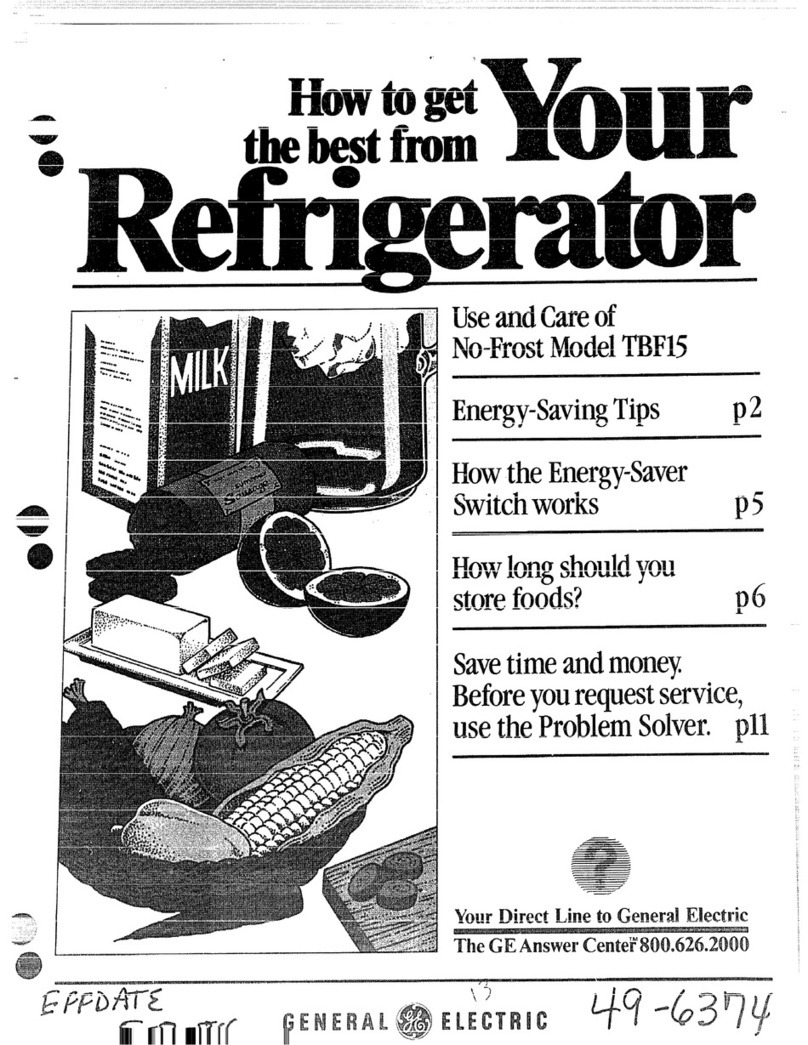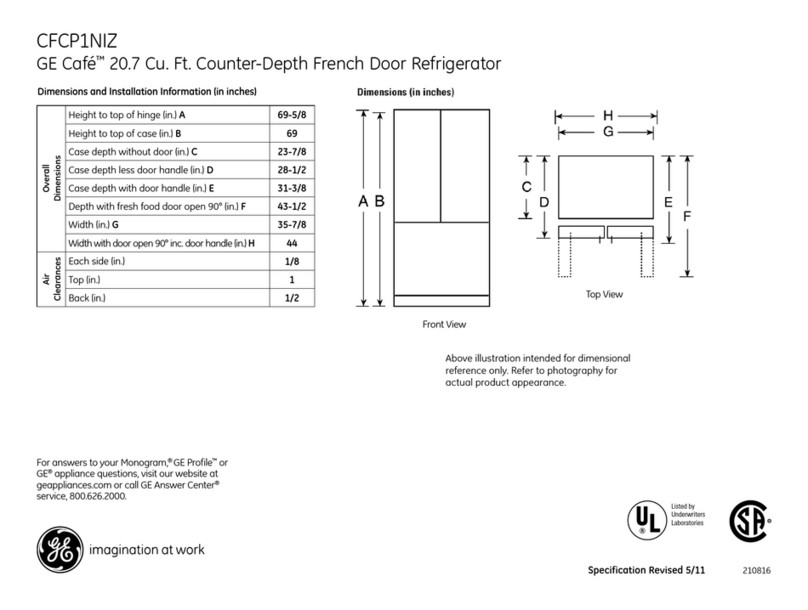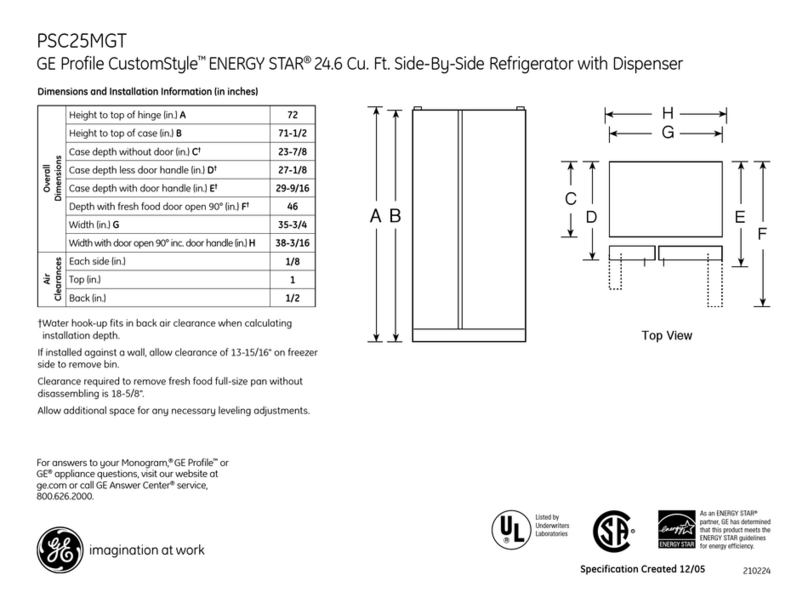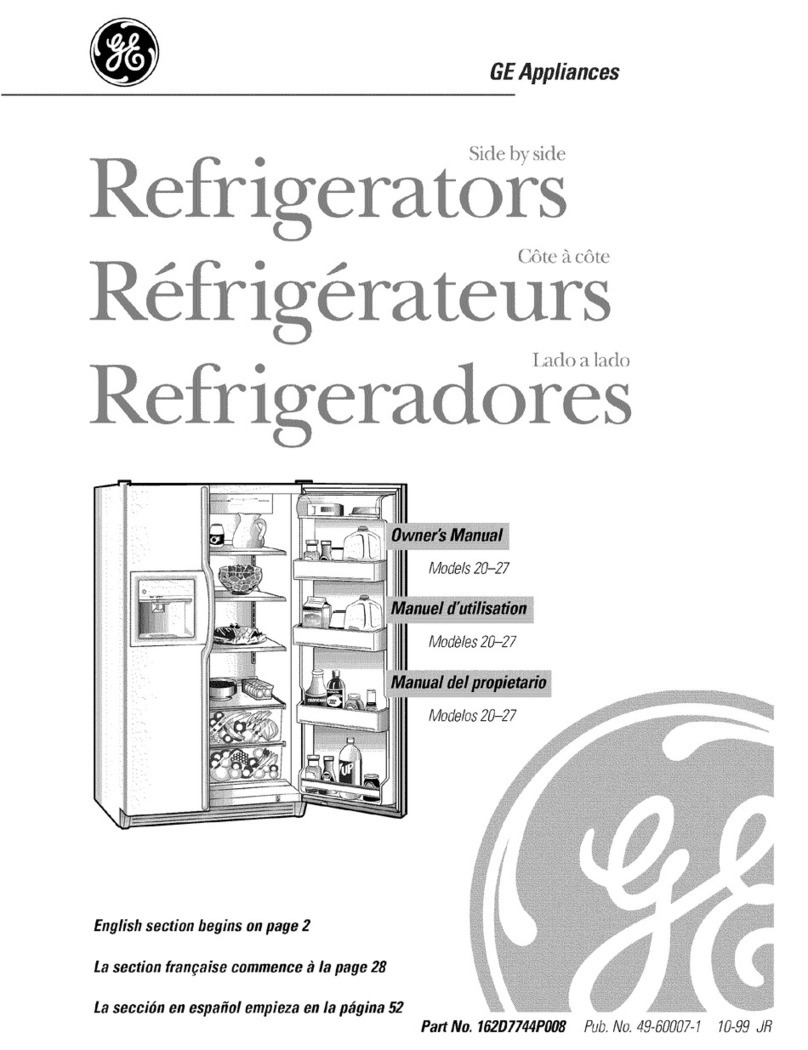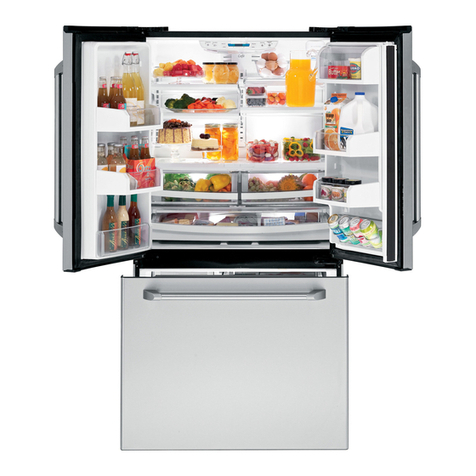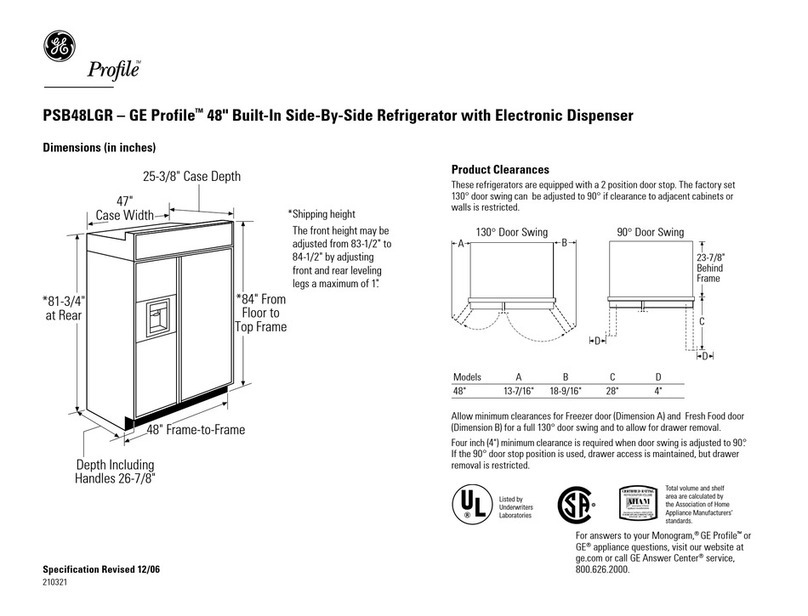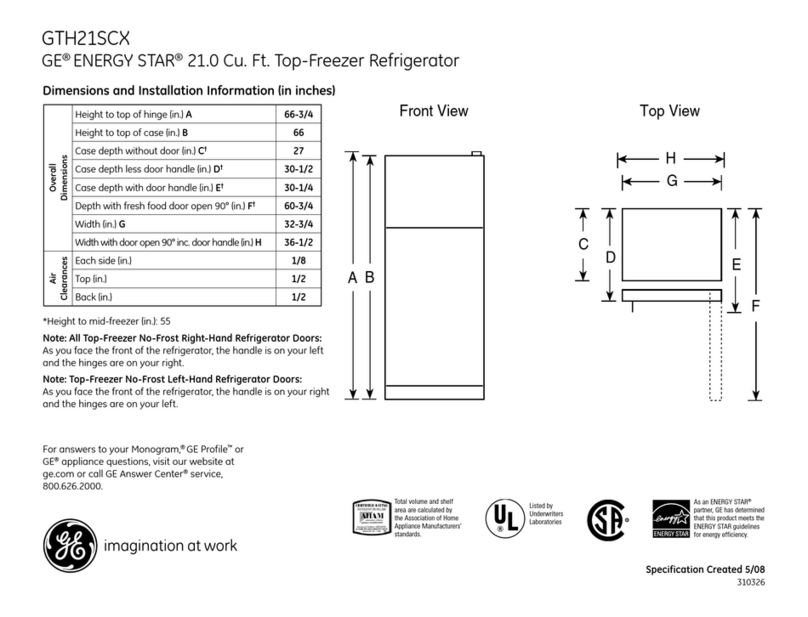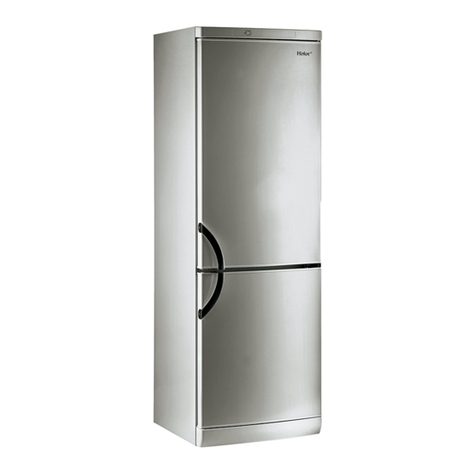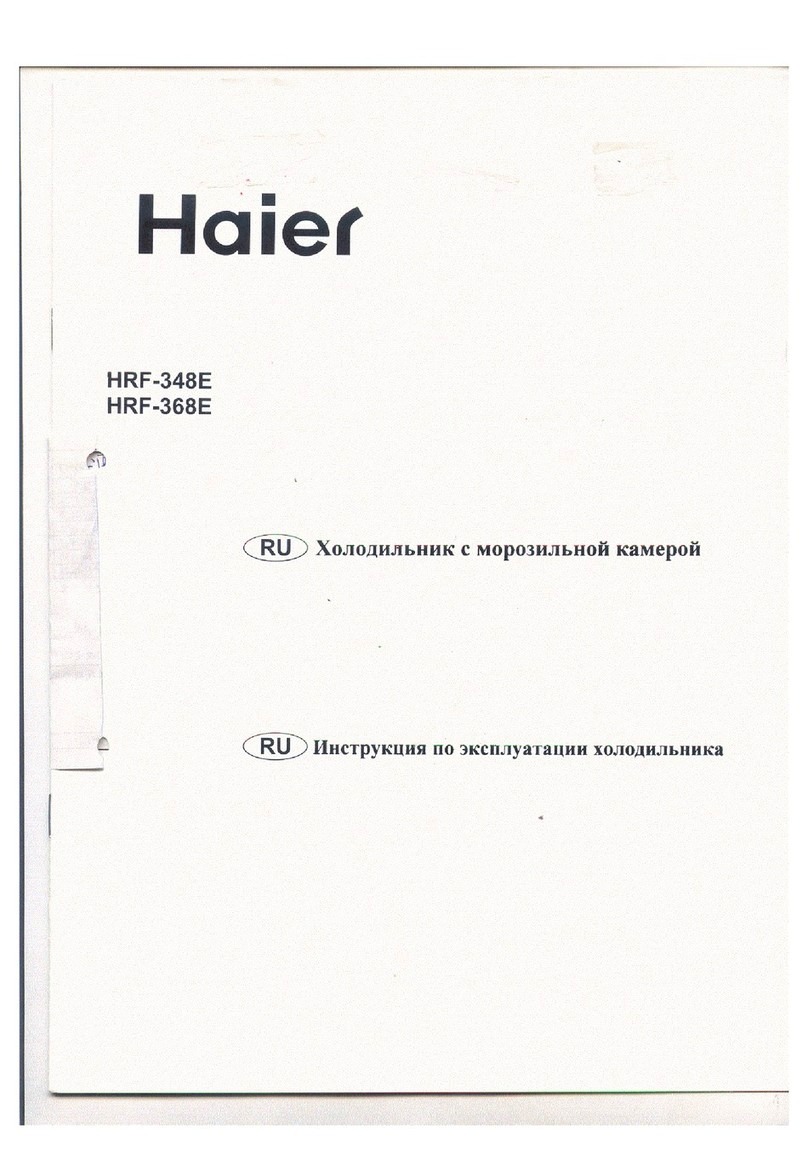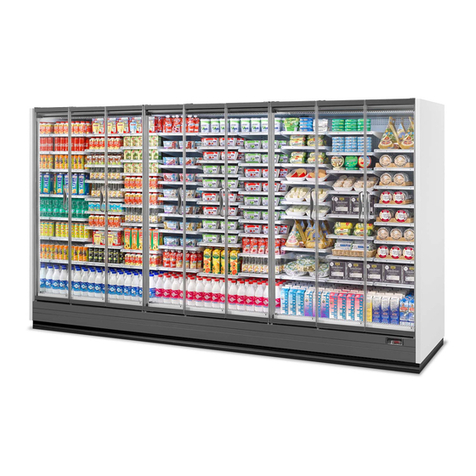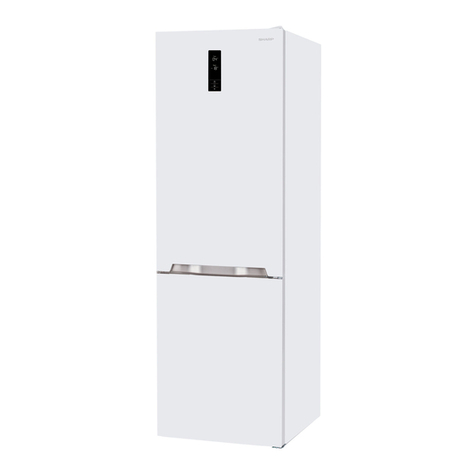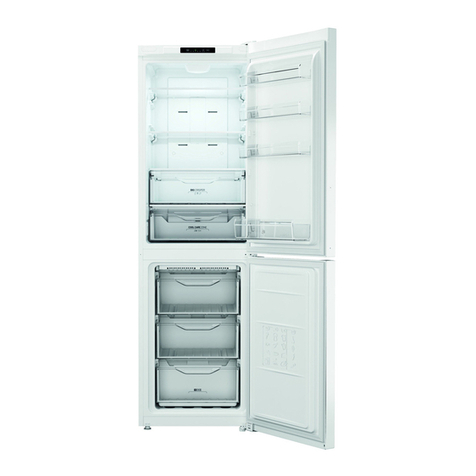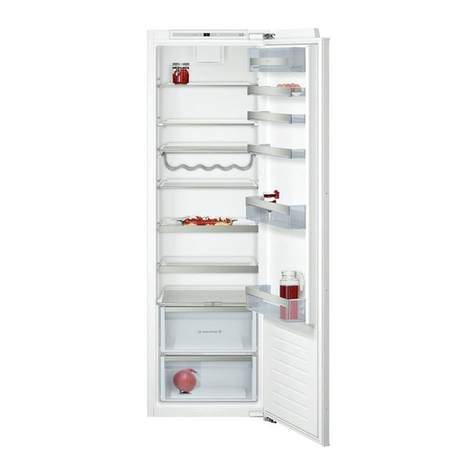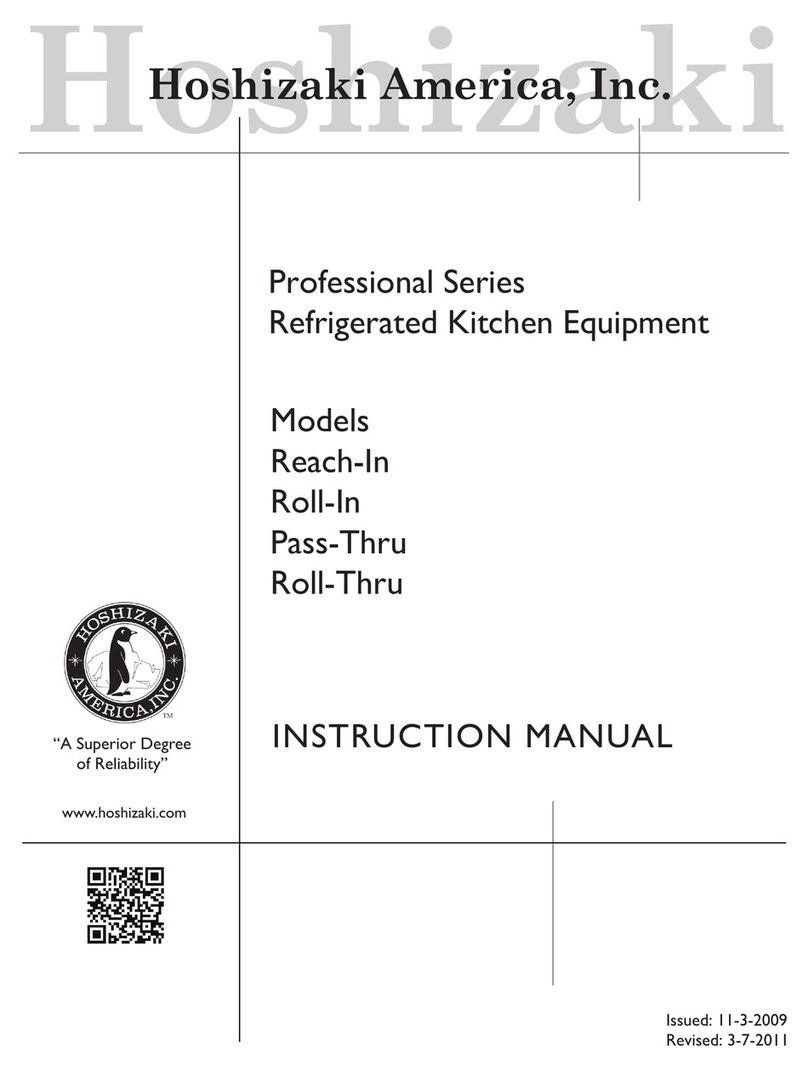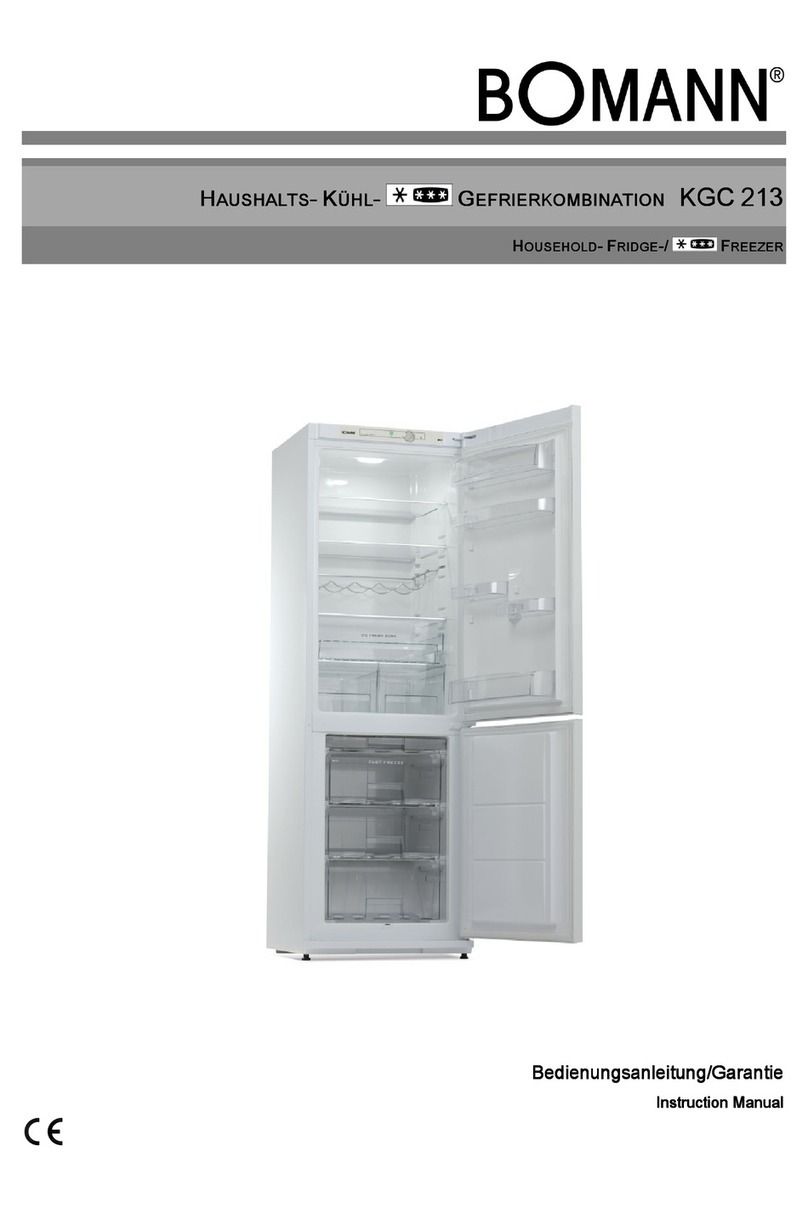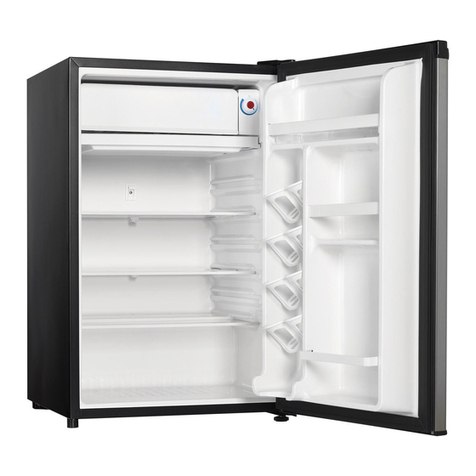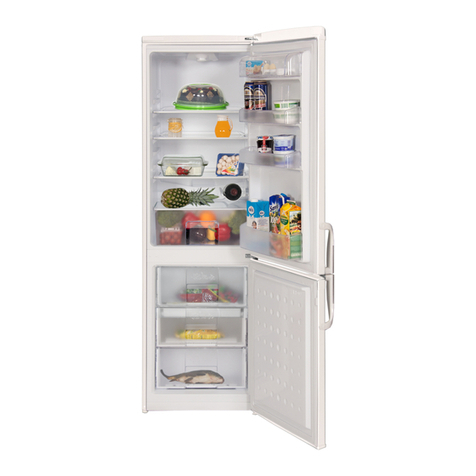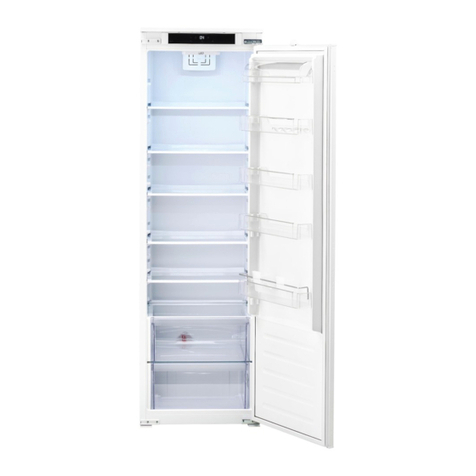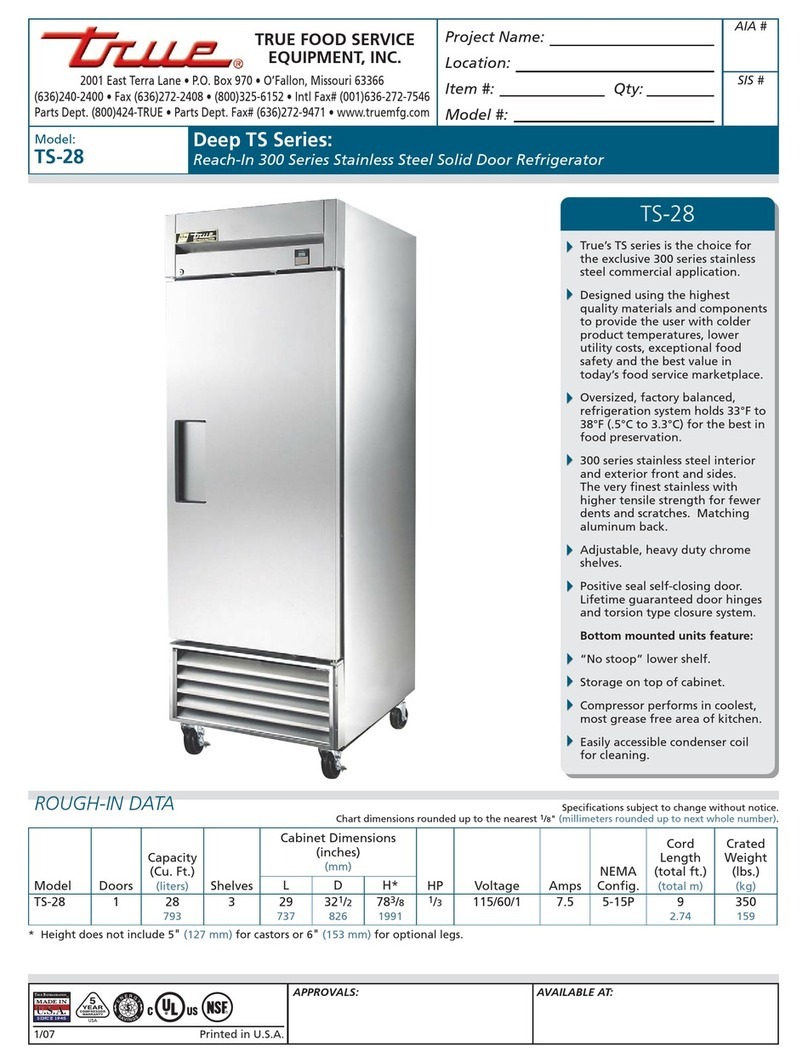
1997 REFRIGERATORS GLOBAL NEW GENERATION
SxS
© General Electric Company 1997 5
(CB): CODE BOARD
(V): VOLTAGE/THERMAL
RATING PLATE
The rating plate is located at the top of the
fresh food liner, near the right front corner.
In addition to the refrigerator model and
serial numbers, the rating plate specifies the
minimum installation clearances; the electrical
voltage, frequency, and amperage ratings; and the
refrigerant type and charge quantity.
The model and serial numbers of the refrigerator
are also located on a bar-code label at the rear of
the cabinet.
KOREAN RATING PLATE (K-Line only)
The Korean rating plate is located on the right-
hand side of the outer cabinet. It shows KIAA
approval #, model #, total volume, fresh food
volume, freezer volume, motor input watts, defrost
heater watts and manufacture date (year/month).
ISO RATING PLATE
The ISO rating plate is located to the right of the traditional rating plate on the upper side of the fresh
food liner. Besides the model #, voltage, amperage, input watts, installation clearances, and refrigerant
charge, it contains unique information such as gross volume, freezing capacity, fresh food net volume,
freezer net volume, and frozen food storage area net volume. There is also a class designator which
identifies the ambient test condition range for its given ISO rating. On Korean models, the logos,
symbols or numbers for the international regulatory agencies/code boards that have approved the model
are shown.
KOREAN ENERGY LABEL (K-Line only)
The Korean energy label is located near the top of the outer fresh food door. It contains information
necessitated by two laws-- the Energy Consumption Control Law (upper half of label) and the Electric
Appliance Safety Control Law (lower half of label). The upper area has numbers ranging from 5 to 1,
where the lower the number, the better the energy rating. The lower half of the label specifies model
number, approval number, volume capacity, and monthly energy consumption.
MINI-MANUAL™
The Mini-Manual is located behind the base grille, at the left side, near the front of the machine
compartment. A plastic pin fastener is used to secure the Mini-Manual during shipping. Accordingly,
